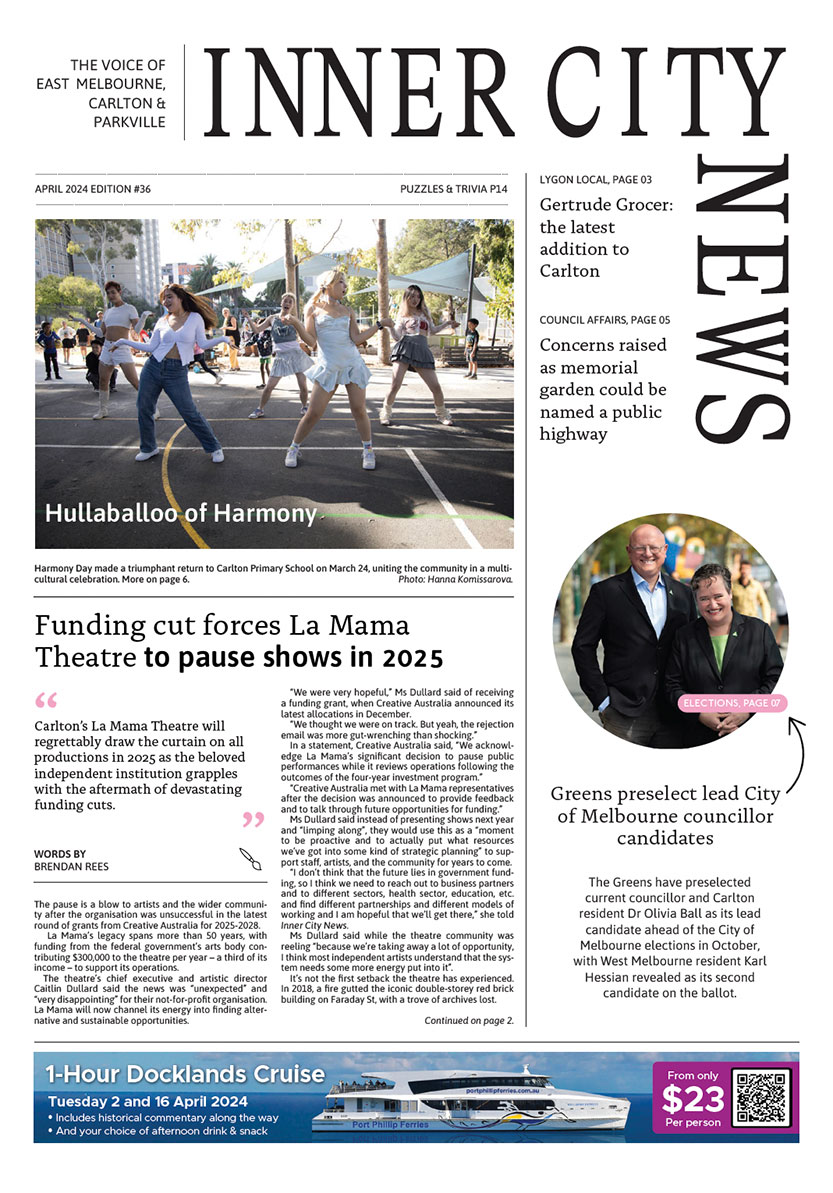Housing debate focuses on Kay St
The new heritage study of Carlton is livening up the debate on social housing by giving local residents a say on what should be protected.
Kay St, in particular, has come under the microscope with two examples of 1980s infill housing being listed as significant.
The houses were constructed under the direction of well-known architect Dimity Reed for Housing Victoria.
“It’s a great story to tell,” said City of Melbourne planner Tanya Wolkenberg at the study’s launch in Carlton. “They were done really well using the best architects of the day.”
Ms Wolkenberg said that social housing was a critical issue. “People who live in social housing deserve the best housing. It was a very innovative project by the government.”
The Carlton Heritage Review was released in February and locals can access the report through the Participate website as part of the amendment process.
“We’re seeking members of the public to have a read then make a submission,” Ms Wolkenberg said.
Social housing has always been a contentious issue and many schemes have been tested, with one to finance it from a tax on private construction projects recently being shelved by the state government.
In the 1980s, the Ministry of Housing changed tack from housing people in need in towers and began building single dwellings in inner suburban streets.
Infill housing was seen as a radical move at the time because it placed public housing clients in the general public rather than on estates.
Well-known architects such as Greg Burgess were engaged to design houses that were livable and respected clients’ needs.
But if you visit Kay St today it’s difficult to recapture the excitement of that idealistic era.
There are several infill housing examples in a predominantly Victorian St, ranging from ill-proportioned copycat versions of Victorian terraces to more elegant facades with broken-up elements and Brutalist references.
The two properties listed as significant do not stand out. One is made of brick and appears to be squeezed into the site. The other has unusual curved elements that come across as dated.
Locals have the opportunity to have their say to the council about the relative merits of those listed and the debate is likely to be lively.
For there is still a stigma attached to “social” housing, if comments made to Inner City News are anything to go by.
At the east end of Kay St are the typical high-rise towers, home to a diverse range of nationalities and people.
But a resident of one of the more salubrious developments just down from the corner, who wished to remain nameless, said his apartment block should be listed as “significant”.
“It was never public housing,” he said. “It was built in the ‘90s.” •
Caption: An example of infill housing in Kay St.

Carlton language school championed by Ukrainian refugee



 Download the Latest Edition
Download the Latest Edition